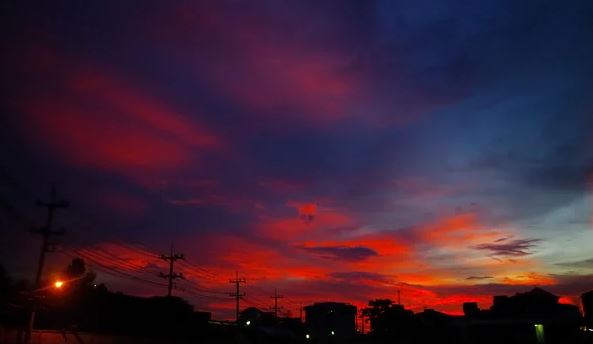The Day the Sky Felt Alive
It was a late summer evening in a quiet town nestled between golden hills and whispering trees. I remember standing outside, barefoot on sun-warmed stone, watching the sky pulse with a surreal, radiant hue. The air shimmered—not with heat alone, but with something deeper. It wasn’t just the weather. It was an atmosphere, a mood, a presence. That was the day I first heard the phrase coelo caliente, whispered by an old neighbor with knowing eyes.
“It means the sky is hot,” she said. “But it’s more than that—it’s when the sky breathes fire into life.”
That moment marked the beginning of a journey. What is coelo caliente, really? Is it a weather pattern, a cultural metaphor, or a mystical phenomenon? Let’s explore the meaning, impact, and magic of this intriguing concept.
What Does Coelo Caliente Mean?
Breaking Down the Term
Coelo caliente is a Spanish phrase loosely translated as “hot sky.” It merges the Latin-rooted word coelo (sky or heaven) with caliente (hot or warm). But while the direct translation might suggest weather, the phrase evokes a broader, more poetic interpretation.
In various regions—especially across Latin America and southern Europe—coelo caliente carries deeper cultural and emotional resonance. It can symbolize:
-
A period of intense summer heat
-
A time of heightened emotional energy
-
A mystical or spiritual atmosphere
-
A metaphor for transformation or rebirth
The term is often used in literature, local folklore, and conversations that hint at something powerful yet invisible.
The Science Behind Hot Skies
What Causes the Sky to Heat Up?
From a meteorological perspective, the sky doesn’t technically get “hot.” The heat we feel is from solar radiation absorbed by the Earth’s surface and re-emitted into the atmosphere. However, there are conditions where the sky appears unusually warm:
-
High-pressure systems: Trap warm air close to the ground
-
Thermal inversions: Cause heat to build at lower altitudes
-
Humidity and haze: Make the air feel denser and more oppressive
-
Urban heat islands: Raise local temperatures significantly
In these situations, people may describe the sky as “heavy,” “glowing,” or coelo caliente—a sensation that goes beyond numbers on a thermometer.
Coelo Caliente in Culture and Language
A Symbol in Storytelling
Many cultures embrace metaphors about the sky to convey emotion and mythology. In some indigenous South American tribes, a “hot sky” is said to signal the presence of ancestral spirits or the arrival of significant change.
In Spanish poetry, coelo caliente often accompanies moments of passion, crisis, or inspiration:
“Bajo el coelo caliente, se desnudan las verdades.”
“Under the hot sky, truths undress themselves.”
In Festivals and Traditions
Across Spain, Mexico, and parts of the Caribbean, local traditions celebrate the summer solstice and other celestial events. During these moments, the sky plays a vital role:
-
Fire festivals (e.g., Las Hogueras de San Juan)
-
Solar rituals tied to indigenous calendars
-
Night dances under what locals call a cielo ardiente (burning sky)
These events blur the line between weather and spirituality, making coelo caliente a lived, felt experience.
Emotional and Psychological Impact
Why Hot Skies Affect Us
Heat doesn’t just change the temperature—it changes us. Researchers have found that extreme heat can:
-
Increase irritability and stress
-
Affect decision-making
-
Trigger nostalgia or reflective moods
-
Enhance a sense of urgency or desire
When people speak of coelo caliente, they’re often describing a headspace as much as an atmosphere. That heavy, electric stillness before a summer storm or the charged calm of a dusk sky can feel almost cinematic.
Real-Life Examples of Coelo Caliente
Stories From Around the World
Let’s explore a few real-world settings where coelo caliente captures the moment perfectly:
-
Seville, Spain: Locals take siestas during peak heat hours, but come sunset, the streets burst into life under a deep orange sky. Street flamenco, cold sangria, and glowing rooftops—coelo caliente in motion.
-
Oaxaca, Mexico: During Guelaguetza, dancers perform in traditional costumes as the sky sizzles above. The heat is part of the performance—it fuels the rhythm and passion.
-
Arizona Desert, USA: Locals and travelers alike speak of “sky fire” at dusk. It’s not just heat—it’s a mesmerizing hue that feels like the Earth and sky are on the same wavelength.
Is Coelo Caliente a Warning Sign?
Climate Change and Shifting Skies
While coelo caliente has poetic roots, it also reflects our changing planet. Global temperatures are rising, and what used to be rare hot-sky days are becoming more frequent.
According to climate experts:
-
The last decade has seen record-breaking heatwaves globally.
-
Urban areas now experience hotter and longer summers.
-
Wildfire seasons have extended in duration and intensity.
These trends suggest that the beauty of coelo caliente comes with a price. It’s a reminder of our relationship with nature—one that must be treated with care and urgency.
How to Embrace the Heat Safely
Tips for Living Under a Hot Sky
Whether you’re chasing sunsets or surviving a heatwave, here’s how to stay safe and connected during coelo caliente moments:
-
Hydrate frequently – even if you’re not thirsty
-
Wear breathable clothing – natural fibers are best
-
Avoid direct sun exposure – especially from 11 a.m. to 3 p.m.
-
Use reflective window covers – to reduce indoor heat
-
Practice “siesta culture” – rest when the day is at its peak
Mindful Activities to Try
-
Sunset journaling: Capture your thoughts as the sky glows
-
Sky photography: Document the color, contrast, and beauty
-
Evening walks: Let the cooler hours reconnect you with the world
-
Moonlit meditation: Transition from coelo caliente to nocturnal calm
Quick Answer: What Is Coelo Caliente?
Coelo caliente is a Spanish phrase meaning “hot sky.” It refers to more than just warm weather—it symbolizes emotionally charged atmospheres, poetic moments, and sometimes spiritual or cultural experiences connected to heat, passion, and transformation.
The Artistic Side of Coelo Caliente
In Paintings and Music
Artists across time have tried to capture the emotion of a hot sky. From impressionist paintings of blazing sunsets to the flamenco rhythms that mirror a simmering summer night, coelo caliente inspires creative expression.
-
Painters like Joaquín Sorolla depicted shimmering Mediterranean skies.
-
Musicians create summer tracks that reflect warmth, longing, and joy.
-
Poets write about the moment when the sky feels too full of feeling to contain itself.
In Modern Media
Streaming shows and films often use sunset scenes to portray turning points. The golden hour, popular among cinematographers, embodies the aesthetic of coelo caliente—a mood suspended between heat, hope, and vulnerability.
Why Coelo Caliente Resonates Today
A Metaphor for Our Times
We live in an era of intensity—politically, emotionally, environmentally. Coelo caliente resonates because it mirrors our inner and outer worlds:
-
We feel heat in our hearts—desire, anger, love.
-
We face heat from our planet—crisis and change.
-
We find heat in connection—moments that burn brightly, even briefly.
This phrase captures a fleeting moment where everything is alive, uncertain, and beautiful.
Final Thoughts: Embracing Coelo Caliente
Coelo caliente is not just about temperature—it’s about tension, transformation, and truth. It teaches us to pause, to feel the air around us, to notice the sky’s color, and to honor the heat within ourselves.
Whether you experience it as a literal hot sky or a figurative moment of intensity, let coelo caliente remind you to stay present, connected, and awake to life’s vibrant spectrum.
In a world that’s always rushing forward, a hot sky slows us down. It grounds us. And it shows us that even in the sweltering heat, beauty endures.





